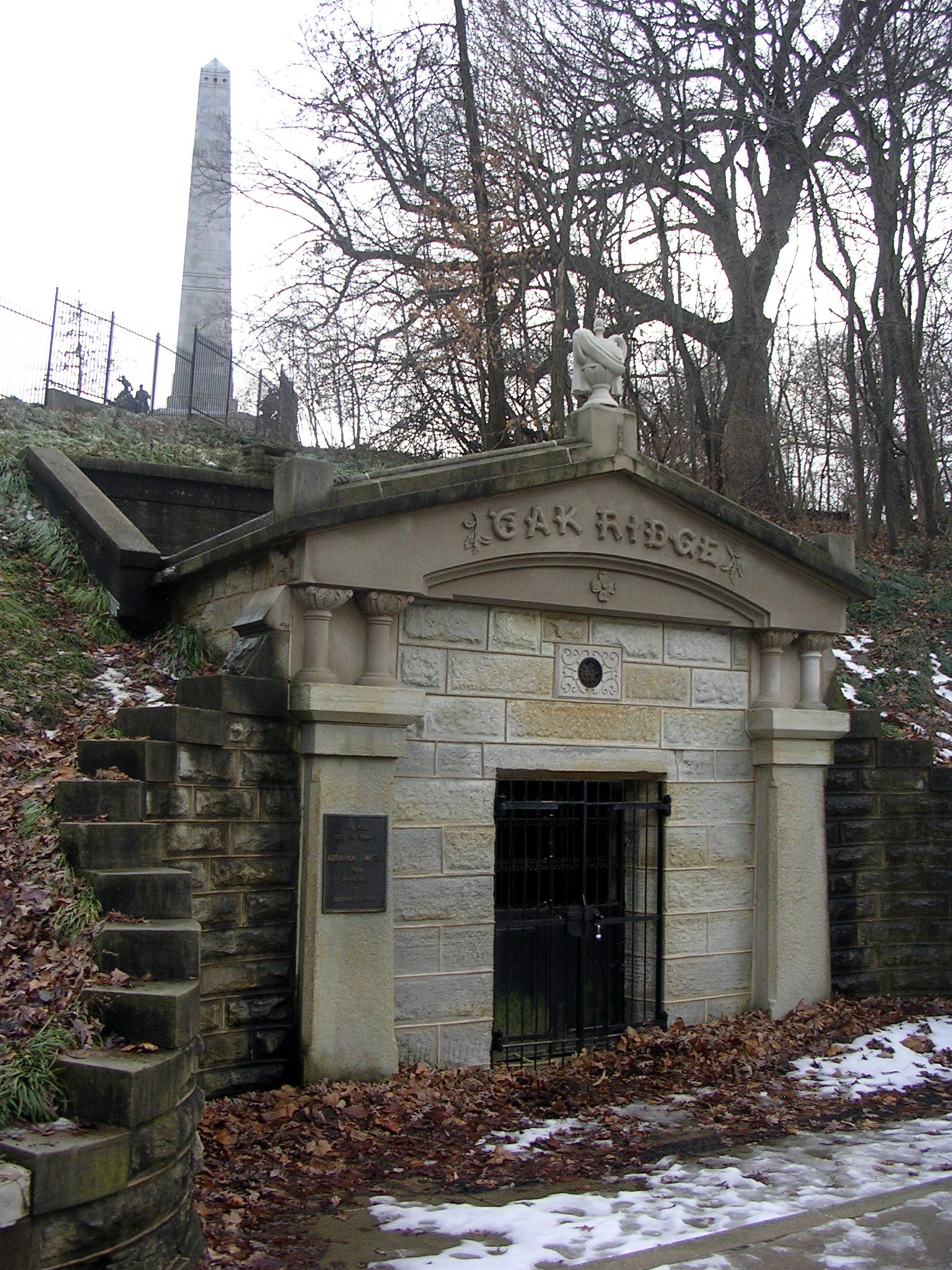The Lincoln Tomb: A Monument to American History
The Lincoln Tomb, located in Oak Ridge Cemetery in Springfield, Illinois, serves as the final resting place for Abraham Lincoln, the 16th President of the United States, his wife Mary Todd Lincoln, and three of their four sons: Edward, William, and Thomas. This historic site, owned and administered by the State of Illinois, stands as a testament to the legacy of one of America’s most revered leaders.
Get your dose of History via Email
Design and Architecture
Constructed from granite sourced from Biddeford, Maine, and dressed in Quincy, Massachusetts, the Lincoln Tomb features a distinctive architectural design. Its base, in a trapezoidal form, supports a towering obelisk that rises 117 feet (36 meters) into the sky. The entrance to the tomb is marked by a semicircular receiving room, opposite which lies the semicircular crypt or burial room. The exterior is adorned with bronze statues, reliefs, and stone carvings, including a bronze recasting of Gutzon Borglum’s head of Lincoln, positioned prominently in front of the entrance.
The interior of the tomb is equally impressive, with marble used extensively throughout. The ground level entrance opens into a rotunda, from which hallways lead to the burial room. This room is centered around an inscribed red marble monument, with the crypts of Lincoln and his family members nearby. The burial room and connecting corridors are decorated with bronze statues and tablets inscribed with Lincoln’s speeches, reflecting various phases of his life and presidency.

Historical Significance
The Lincoln Tomb was designated a National Historic Landmark on December 19, 1960, recognizing its importance in American history. The site’s history began immediately following Lincoln’s assassination in 1865, when the National Lincoln Monument Association was formed to fund the construction of a memorial. Lincoln’s body, along with those of three of his sons, was moved to the tomb in 1871, three years after construction began. Following an attempted theft of Lincoln’s body in 1876, security measures were increased, and the remains were eventually placed in a concrete vault beneath the burial room’s floor in 1901.
The tomb has undergone several restorations, the most significant of which occurred between 1899 and 1901, and again in 1930-31 when the interior was reconstructed in an Art Deco style. These restorations have ensured that the tomb remains a fitting tribute to Lincoln’s legacy.

Adjacent Memorials
In addition to the Lincoln Tomb, the site includes memorials to Illinois veterans of World War II, the Korean War, and the Vietnam War. These memorials honor the sacrifices of Illinoisans in these conflicts, further enhancing the historical significance of the site.
Conclusion
The Lincoln Tomb stands as a powerful symbol of American history and the enduring legacy of Abraham Lincoln. Its architectural beauty and historical significance make it a site of pilgrimage for those wishing to pay their respects to one of the nation’s greatest leaders. Through its preservation and the adjacent memorials, the Lincoln Tomb continues to educate and inspire future generations about the values Lincoln championed: unity, freedom, and democracy.
Sources:

